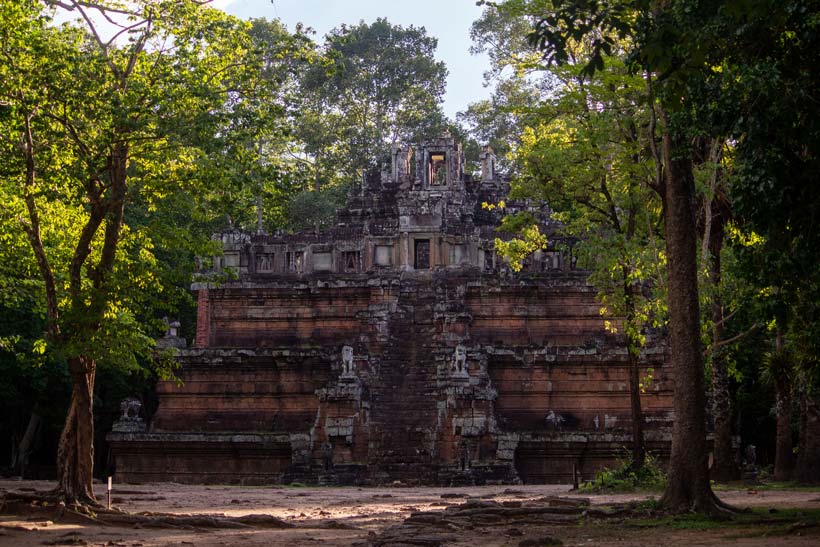
Location, History, and Dedication
Phimeanakas Temple, also known as Prasat Phimean Akas, is located within the Royal Palace enclosure of Angkor Thom, just north of the magnificent Baphuon Temple in Siem Reap, Cambodia. Constructed in the late 10th century, the temple was initially built during the reign of King Rajendravarman and later completed and enhanced by King Suryavarman I in the early 11th century.

Phimeanakas was dedicated to Hinduism, a common religious theme during the era, although the exact deity worshipped here remains uncertain. Some historians speculate that Shiva may have been venerated, based on similar temple structures of the time.
Architecture, Site Plan, and Style
Phimeanakas showcases the classic Khleang architectural style, characterized by its symmetry, minimalist ornamentation, and the use of laterite and sandstone. The temple stands as a three-tiered pyramid, symbolizing the sacred Mount Meru in Hindu cosmology.
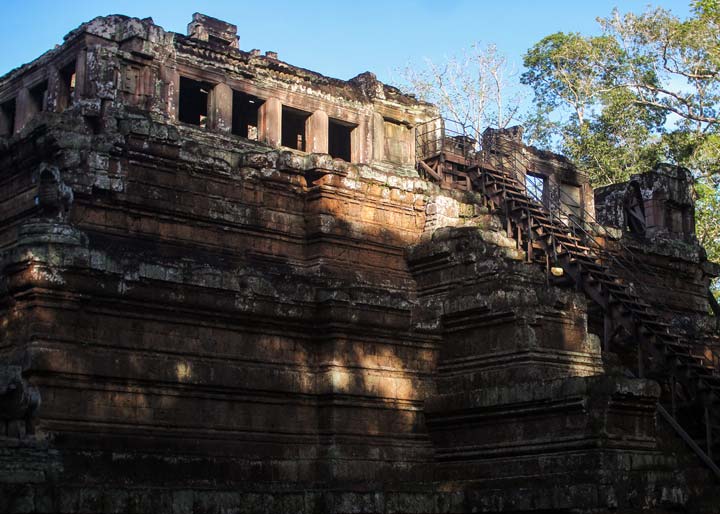
At its summit, it once featured a golden tower—a dazzling structure recorded by the 13th-century Chinese envoy Zhou Daguan, who described it as shimmering in the sunlight. The temple’s steep staircases lead up to a small sanctuary on the top platform, surrounded by remnants of once-enclosing galleries. From above, one can imagine the grandeur of the royal palace complex that once surrounded it.
Unique Features & Why It’s Famous
Phimeanakas is more than just a temple—it’s the setting of one of Angkor’s most intriguing legends. According to ancient Khmer mythology, the king was required to spend the night with a serpent spirit (Nāga) in the form of a woman, who dwelled within the temple’s upper sanctuary. Failing to do so, legend says, would bring disaster to the kingdom. This myth adds an element of mysticism and underscores the symbolic role of the king as the bridge between the divine and earthly realms.
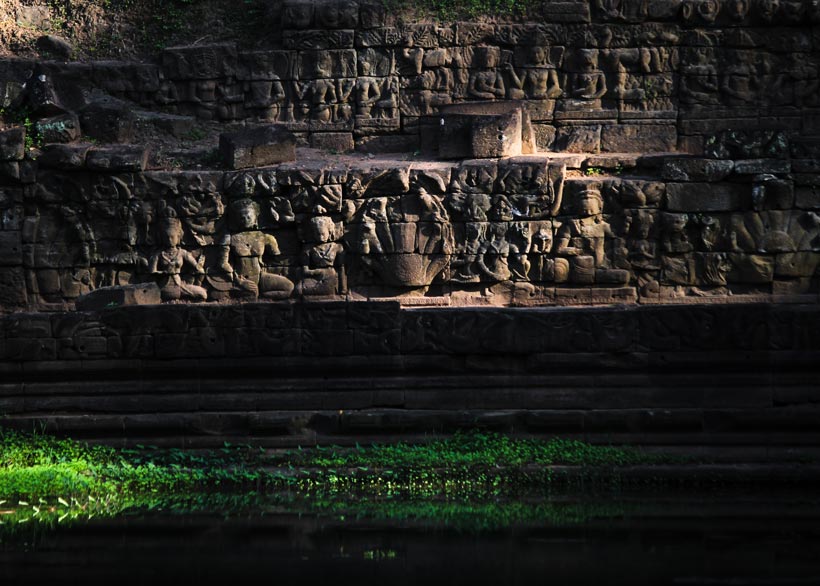
While the architecture may seem modest compared to Angkor Wat or Bayon, it’s this combination of mystery, myth, and royal symbolism that makes Phimeanakas a memorable and spiritual destination.
My Experience at Phimeanakas
I arrived at Phimeanakas around 4:30 PM, during the golden hour when most tour groups had already moved on. The area was calm, shaded by tall trees, and filled with the distant sounds of birds and rustling leaves. A brief one-minute rain shower passed, leaving the stone warm and glistening under a vibrant blue sky.
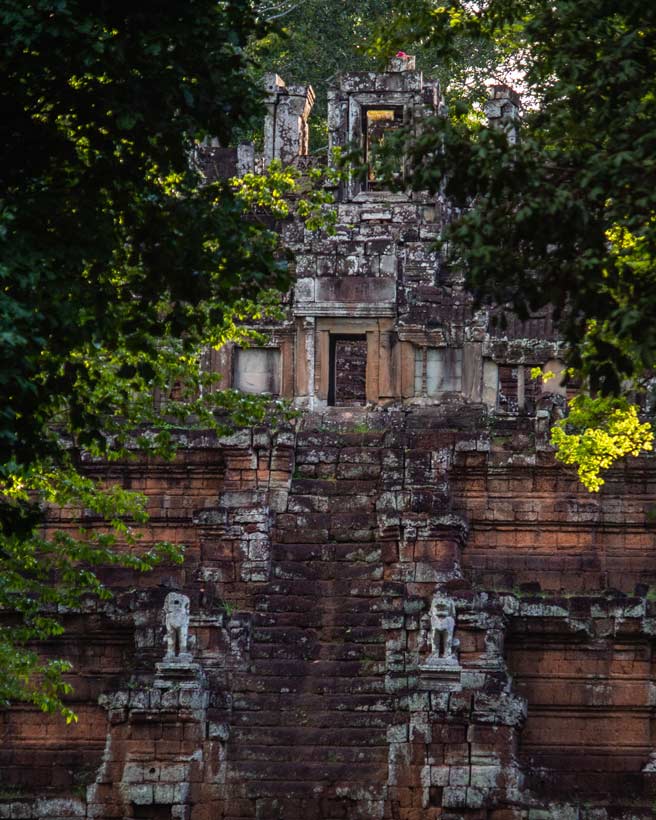
The transition into Cambodia’s Green Season, which begins around May 26, painted the surrounding landscape in rich greens, making it an ideal time for photography. I found the lighting at this hour especially beautiful, with sunlight filtering through the tree canopy and casting long shadows across the mossy stones. It was a short visit, but one that left a lasting impression of tranquility and timelessness.
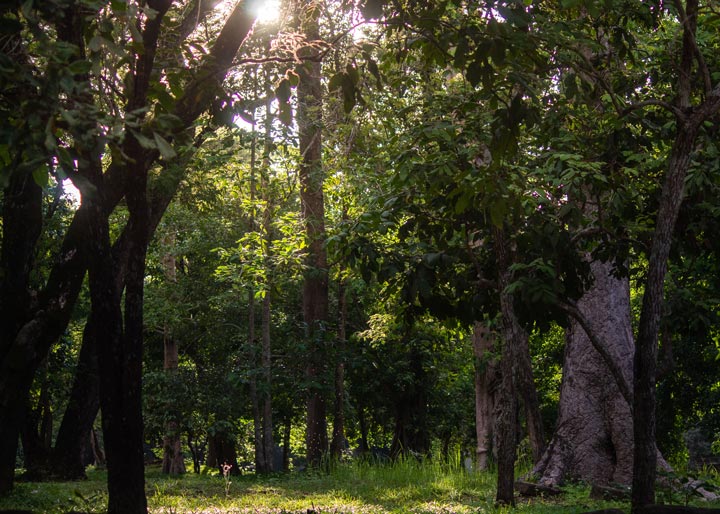
Short Video
How to Get There
Phimeanakas is centrally located within Angkor Thom. Visitors can reach it by:
Bicycle – Ideal for Cycling adventurers in Siem Reap travelers who want to explore at their own pace.
Motorbike or Scooter – Efficient and convenient for covering more temples.
Car or Tuk-tuk – Most common method for tourists. Tuk-tuks are especially popular for offering an open-air experience and local insight from drivers.
Map of Phimeanakas
Effortless Siem Reap Transport
Secure Your Ideal Vehicle for Seamless Journeys Around Angkor.

Travel Tips & Dress Code
- Wear light, breathable clothing and comfortable walking shoes—the terrain includes uneven stones and steep steps.
- Respect local customs by covering your shoulders and knees. read more
- Bring water, sunscreen, and insect repellent.
- Visit in the early morning or late afternoon to avoid the heat and harsh midday light.
- Always carry your Angkor Pass, as it is checked at various points.
FAQs
Q: Is there an entrance fee?
A: Yes. Access requires an Angkor Pass, valid for all temples within the Angkor Archaeological Park.
Q: How long does it take to explore?
A: A short but rewarding visit, typically 30 to 45 minutes.
Q: Can I climb to the top?
A: Yes, but be mindful—the stairs are steep and narrow. Use both hands for safety and take your time descending.
Nearby Attractions From Phimeanakas
By Walk Angkor Thom area (100m – 500m)
Discover the heart of ancient Angkor Thom, just steps from Phimeanakas! Within a short, enchanting stroll of 100 to 500 meters, immerse yourself in a world of wonder.
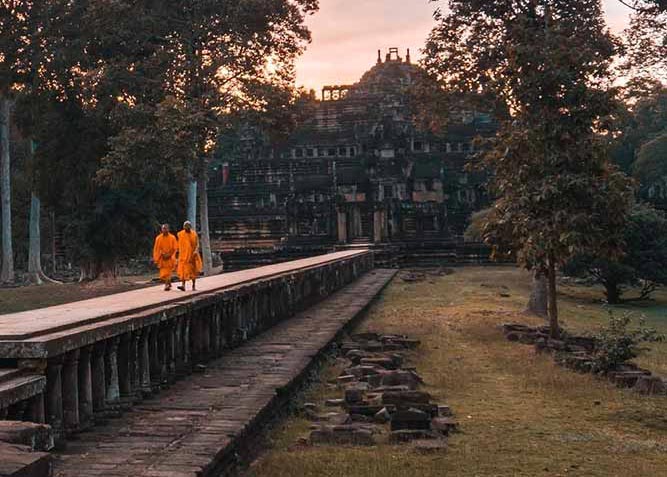
Baphuon Temple
Baphuon Temple (South) – This majestic pyramid represents Mount Meru and is known for its steep staircase, reconstructed sandstone bridge, and the giant reclining Buddha on its west side—an incredible blend of religious transformation from Hinduism to Buddhism.
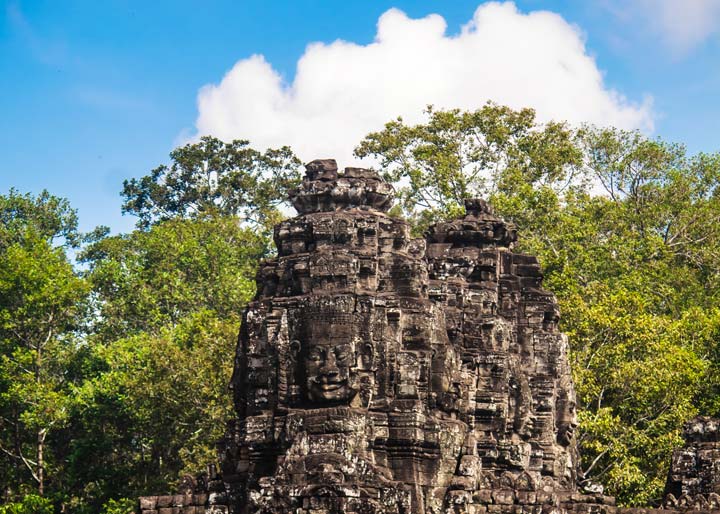
Bayon Temple
Bayon Temple (Southeast) – Famous for its 216 enigmatic stone faces, this iconic temple symbolizes the all-seeing eyes of Avalokiteshvara. The interplay of light and shadow among its towers creates an unforgettable visual experience.
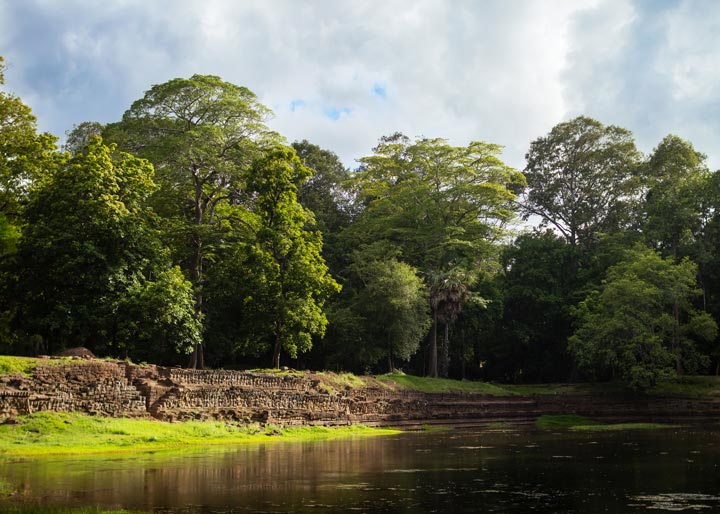
Woman’s Pond
The Woman’s Pond or Srah Bros & Srah Srey (North) – These small ancient ponds add serenity to the forested setting. Though less visited, they were likely used for ritual bathing or royal ceremonies.
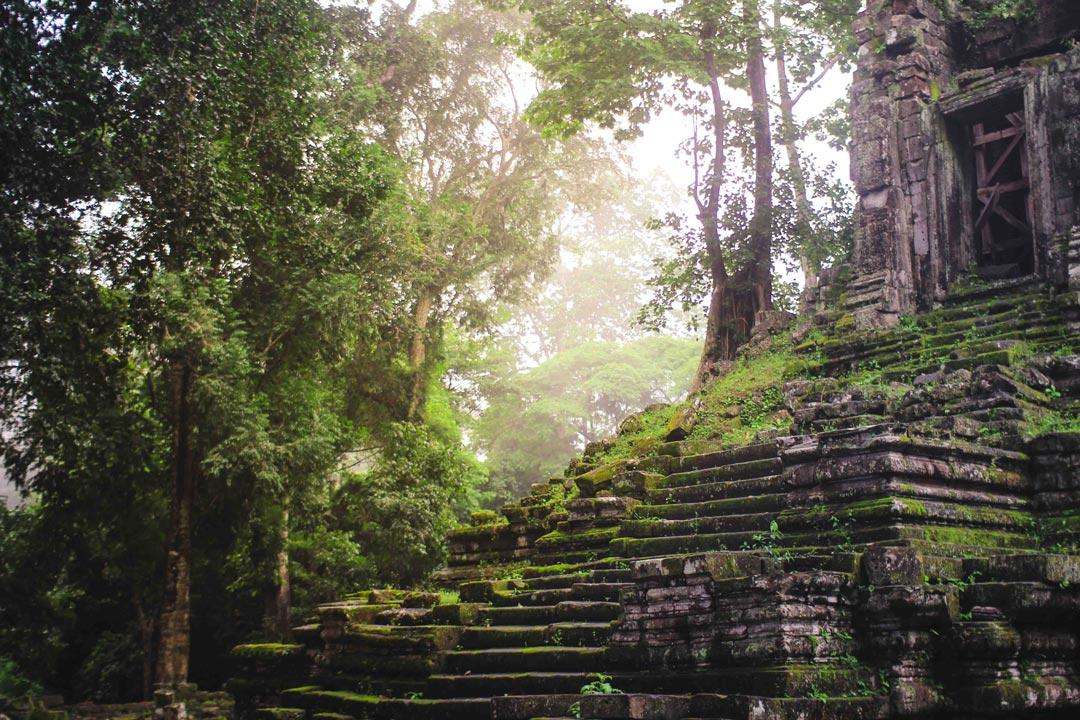
Preah Palilay
Preah Palilay (Northwest) – Tucked away in a shaded grove, this small temple with its unique chimney-like tower exudes a peaceful charm. Look for its beautiful lintels and the sacred Bodhi tree growing nearby.
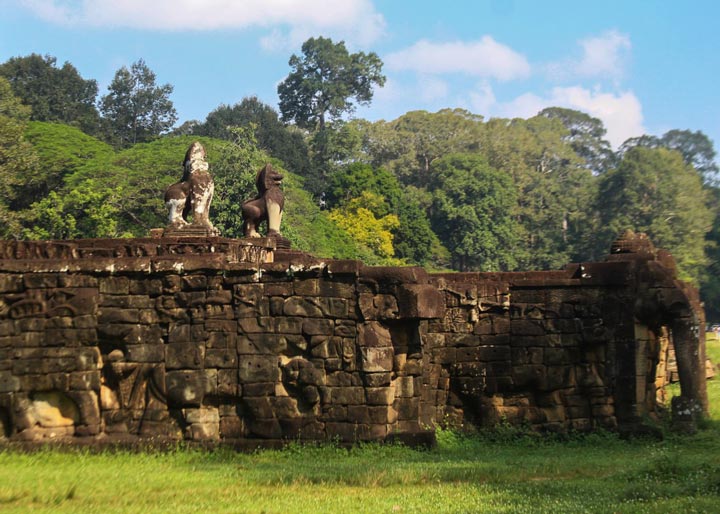
Terrace of the Elephants
Terrace of the Elephants & Terrace of the Leper King (East) – Once viewing platforms for royal ceremonies, these terraces boast intricate carvings of elephants, celestial beings, dancers, and mythical guardians, preserving stories of Angkor’s royal legacy in stone.
By Vehicle (From 1km Distance)
Thommanon & Chau Say Tevoda – Twin 12th-century temples that stand gracefully along the Victory Gate road. Admire their well-preserved Apsara dancers and lush setting near the forest edge.
Ta Keo – Known as the “Mountain with Bronze Peaks,” this temple was left unfinished, but its monolithic form and steep climb offer commanding views and insight into early temple construction techniques.
Ta Prohm – One of Angkor’s most photogenic sites, with massive tree roots embracing temple walls. The combination of nature reclaiming architecture makes it feel like a scene from a dream. read more
Banteay Kdei – Often quiet, this monastic complex features narrow corridors, tree-lined courtyards, and tranquil vibes. Its layout is similar to Ta Prohm but with fewer crowds.
Srah Srang – Just across from Banteay Kdei, this “Royal Bath” is a peaceful spot, especially during sunrise, when the light reflects off the water and mist hovers above the surface.
Prasat Kravan – A compact but charming temple made of brick, home to unique bas-reliefs of Vishnu carved directly into the interior walls—rare and delicate works of art.
Angkor Wat – The heart of the Angkor complex, renowned for its harmonious design, sprawling moat, and spiritual symbolism. Don’t miss the bas-relief galleries and the sunrise view from the lotus pond.

Where to Stay in Siem Reap
Shopping & Dining After Visiting Phimeanakas
After your temple adventure, unwind with a mix of local markets, street food, and upscale Khmer cuisine:
Old Market (Psar Chas) – Hunt for handcrafted souvenirs, spices, and silks.
Angkor Night Market – Enjoy local street food, refreshing drinks, and artisan stalls after dark.
Pub Street – The heart of Siem Reap’s nightlife, with bars, restaurants, and live music.
Fine Dining – Try restaurants like Chanrey Tree, Malis, or Cuisine Wat Damnak for a refined taste of Cambodian flavors.

BEST Dining in Siem Reap
Photo by Sathya Moth


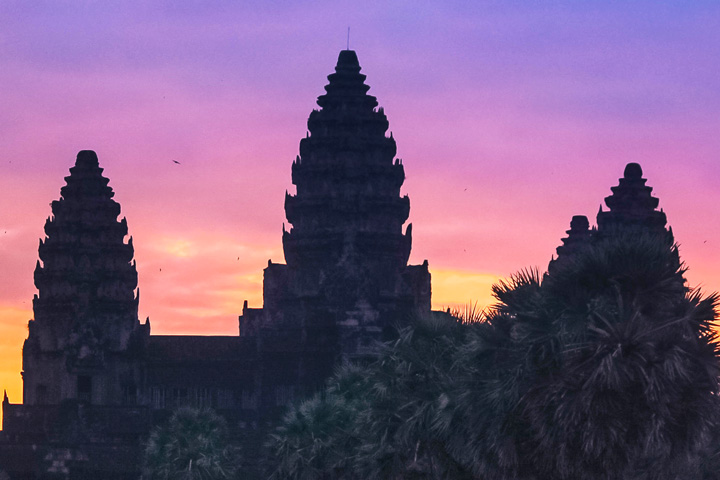
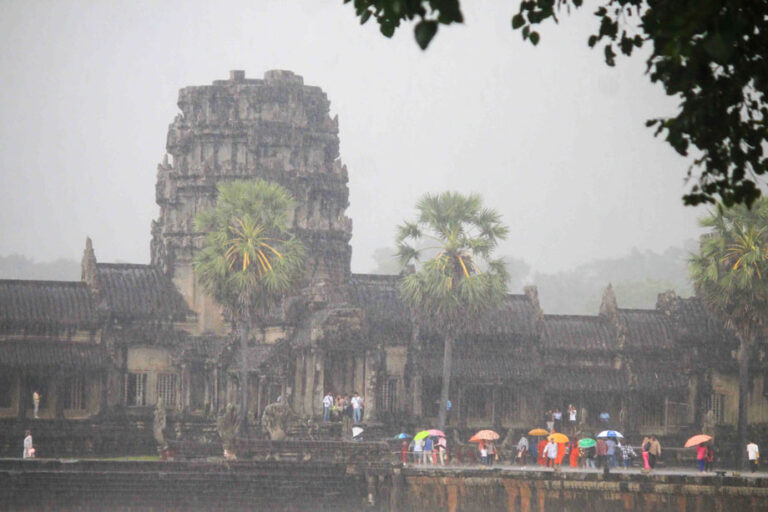

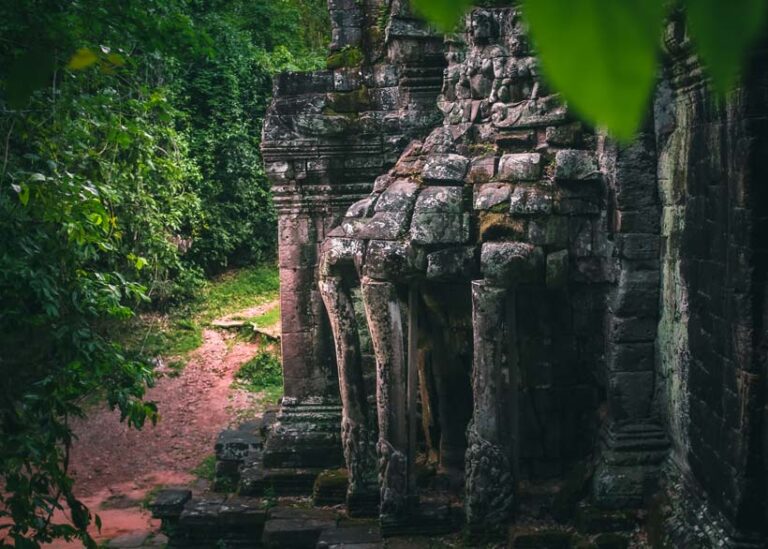
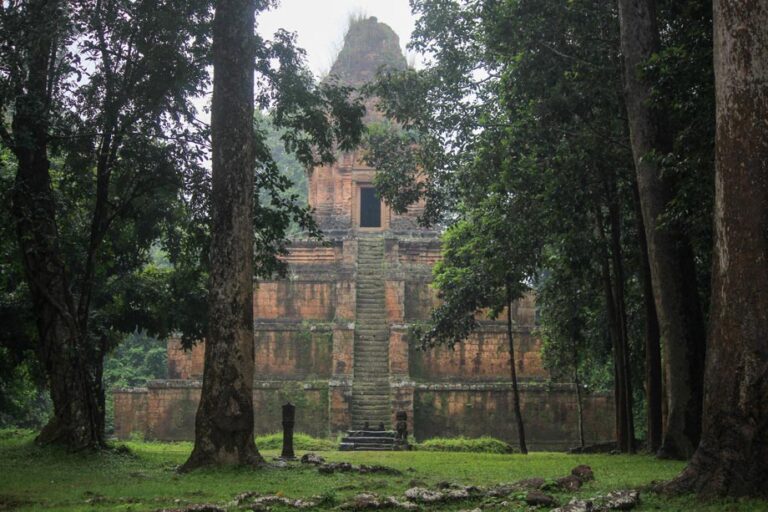
Leave a Reply